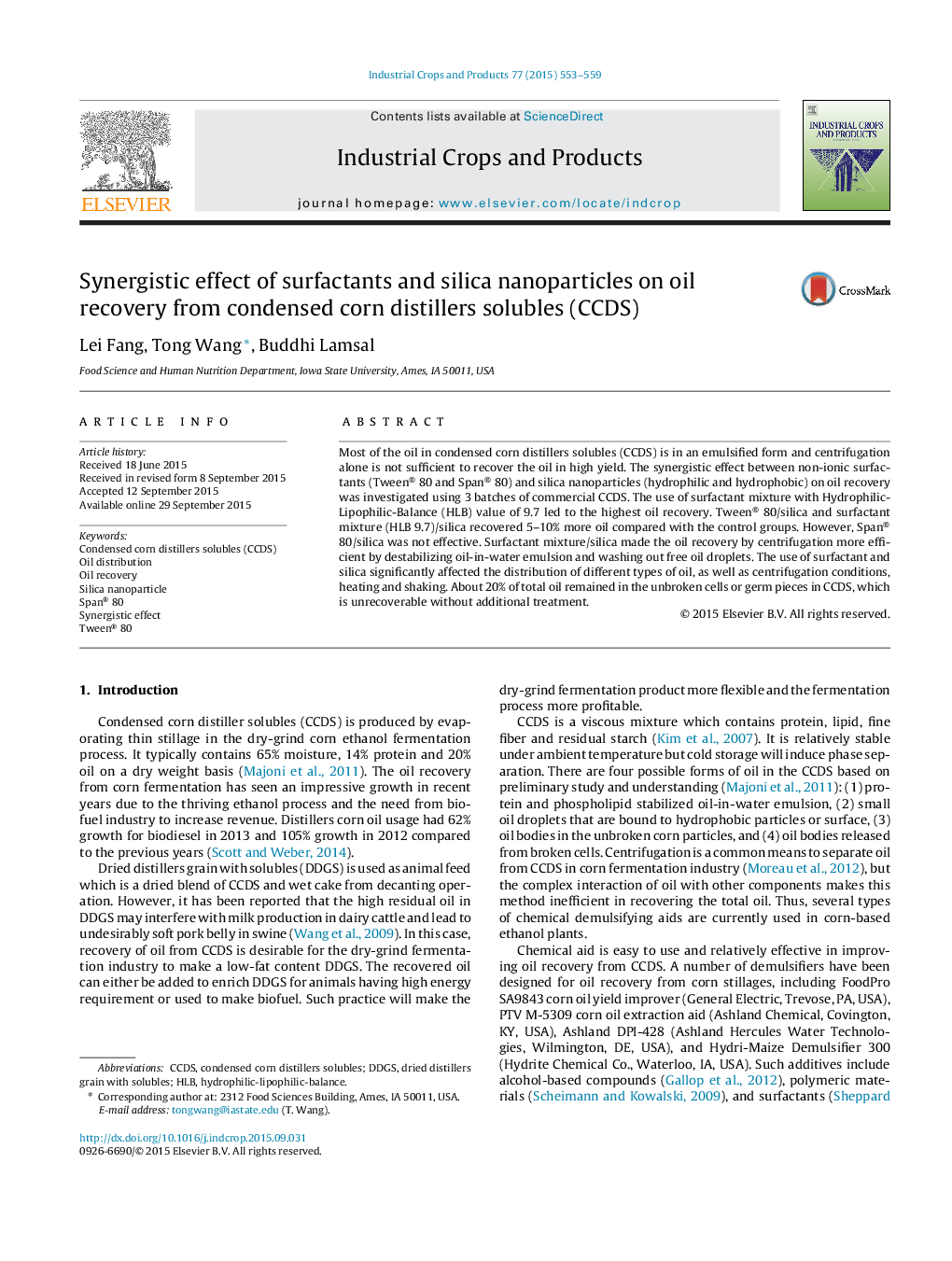| Article ID | Journal | Published Year | Pages | File Type |
|---|---|---|---|---|
| 4512611 | Industrial Crops and Products | 2015 | 7 Pages |
•The use of Tween® 80/Span® 80 mixture led to highest oil recovery at weight ratio of 1:1.•Synergistic effect between surfactant and silica nanoparticles was demonstrated.•CCDS properties affected the oil recovery performance.•Surfactant as well as oil extraction conditions affected distribution of different types of oil in CCDS.
Most of the oil in condensed corn distillers solubles (CCDS) is in an emulsified form and centrifugation alone is not sufficient to recover the oil in high yield. The synergistic effect between non-ionic surfactants (Tween® 80 and Span® 80) and silica nanoparticles (hydrophilic and hydrophobic) on oil recovery was investigated using 3 batches of commercial CCDS. The use of surfactant mixture with Hydrophilic-Lipophilic-Balance (HLB) value of 9.7 led to the highest oil recovery. Tween® 80/silica and surfactant mixture (HLB 9.7)/silica recovered 5–10% more oil compared with the control groups. However, Span® 80/silica was not effective. Surfactant mixture/silica made the oil recovery by centrifugation more efficient by destabilizing oil-in-water emulsion and washing out free oil droplets. The use of surfactant and silica significantly affected the distribution of different types of oil, as well as centrifugation conditions, heating and shaking. About 20% of total oil remained in the unbroken cells or germ pieces in CCDS, which is unrecoverable without additional treatment.
Graphical abstractOil separation from the corn stillage by centrifugation is facilitated by the use of surfactant mixed with silica nanoparticles (the best combination is demonstrated), heating, mixing and stronger centrifugal forces. The recovery of the free oil, the top layer, can be easily achieved.Figure optionsDownload full-size imageDownload as PowerPoint slide
